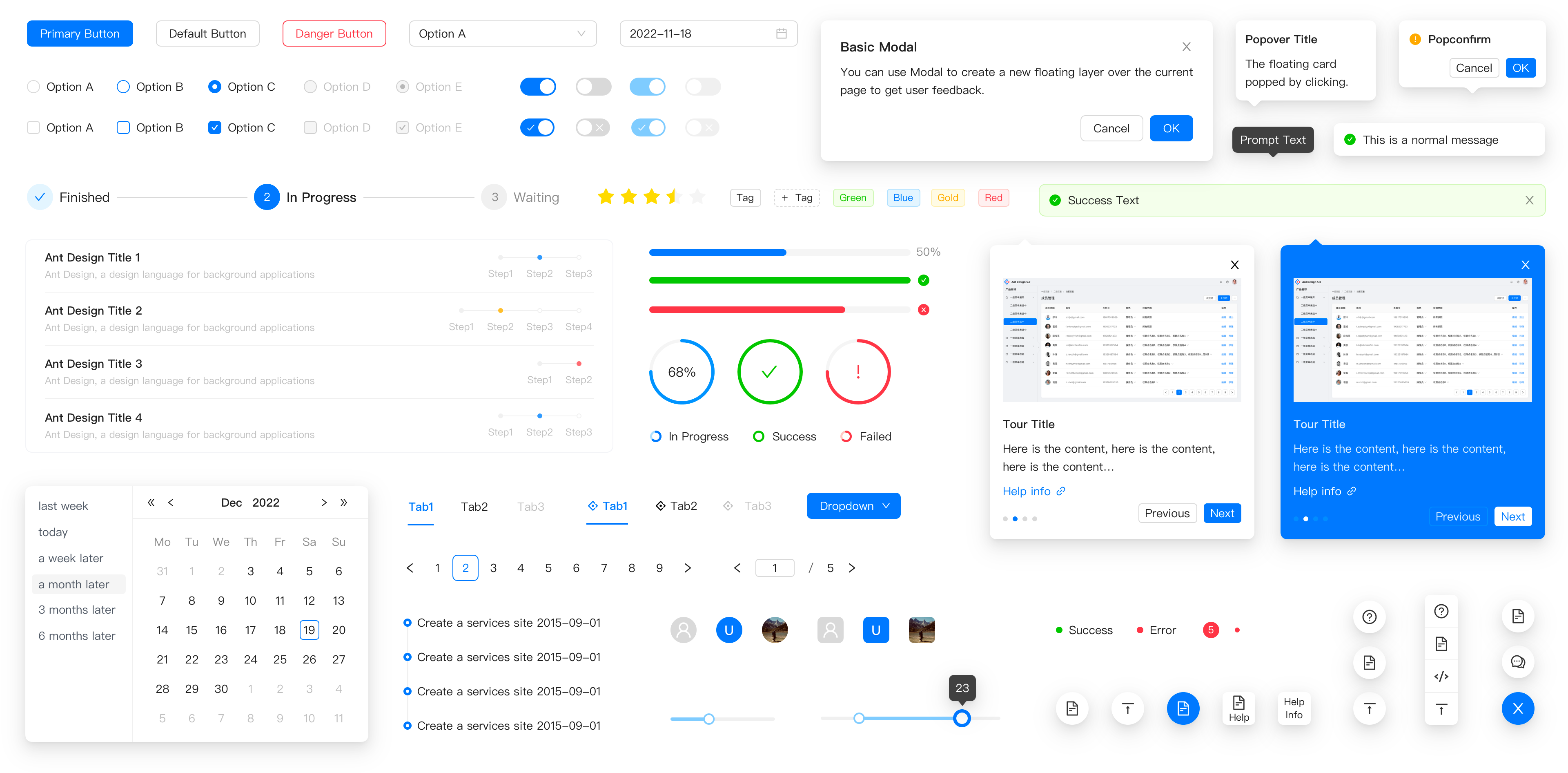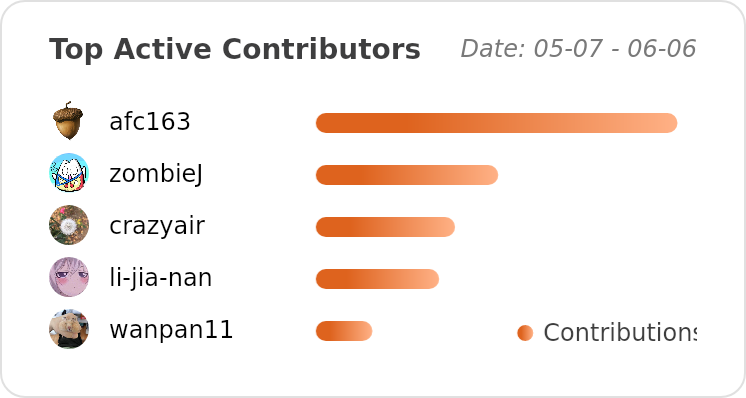Design Principles
- antd:
Ant Design follows a design language that emphasizes clarity, consistency, and usability. It provides a comprehensive design system that includes guidelines for layout, color, typography, and interaction, making it ideal for enterprise applications that require a polished look.
- react-bootstrap:
React-Bootstrap leverages Bootstrap's design principles, which emphasize a mobile-first approach and responsive design. It allows developers to create layouts that adapt seamlessly to different screen sizes while maintaining a consistent look and feel.
- semantic-ui-react:
Semantic UI React promotes the use of human-friendly HTML and a focus on semantic structure. Its design principles prioritize accessibility and usability, ensuring that applications are easy to navigate and understand.
- material-ui:
Material-UI is built around Google's Material Design principles, which focus on creating a visual hierarchy, responsive animations, and a tactile experience. This design philosophy encourages intuitive user interactions and a cohesive aesthetic across applications.
Component Customization
- antd:
Ant Design offers extensive customization options through its theming capabilities, allowing developers to tailor the appearance of components to fit specific branding requirements. It supports global and component-level theming, making it flexible for various applications.
- react-bootstrap:
React-Bootstrap components are built with Bootstrap's utility classes, allowing for straightforward customization through CSS. While it offers basic customization options, developers may need to write additional CSS for more complex styling needs.
- semantic-ui-react:
Semantic UI React allows for customization through its theming capabilities and class-based styling. Developers can easily adjust component styles using predefined classes or custom CSS, making it adaptable for various design requirements.
- material-ui:
Material-UI provides a powerful styling solution that allows for deep customization of components using a theme provider. Developers can easily override styles and create custom themes, enabling a high degree of flexibility while adhering to Material Design guidelines.
Accessibility
- antd:
Ant Design components are built with accessibility in mind, following ARIA standards to ensure that applications are usable by people with disabilities. It includes features like keyboard navigation and screen reader support, enhancing the overall user experience.
- react-bootstrap:
React-Bootstrap follows Bootstrap's accessibility guidelines, ensuring that components are usable with assistive technologies. It supports keyboard navigation and provides semantic HTML elements, contributing to a more accessible user experience.
- semantic-ui-react:
Semantic UI React is designed with accessibility in mind, offering components that are compliant with ARIA standards. It promotes the use of semantic HTML, which enhances the accessibility of applications for users with disabilities.
- material-ui:
Material-UI emphasizes accessibility by providing components that are compliant with WAI-ARIA standards. It ensures that all interactive elements are keyboard navigable and screen reader friendly, making applications more inclusive.
Community and Ecosystem
- antd:
Ant Design has a strong community and is widely adopted in enterprise applications, particularly in Asia. Its ecosystem includes a variety of tools and extensions that enhance its capabilities, making it a robust choice for large-scale projects.
- react-bootstrap:
React-Bootstrap benefits from the extensive Bootstrap community, offering a wealth of resources, themes, and plugins. Its familiarity among developers makes it a popular choice for those transitioning from traditional Bootstrap to React.
- semantic-ui-react:
Semantic UI React has a dedicated community and is part of the larger Semantic UI ecosystem. It provides comprehensive documentation and resources, making it easier for developers to adopt and implement in their projects.
- material-ui:
Material-UI boasts a large and active community, providing extensive documentation, examples, and third-party integrations. Its popularity ensures a wealth of resources and support for developers, making it a reliable choice for modern web applications.
Learning Curve
- antd:
Ant Design has a moderate learning curve, especially for developers familiar with React. Its comprehensive documentation and examples help ease the onboarding process, but mastering its extensive component library may take time.
- react-bootstrap:
React-Bootstrap has a gentle learning curve for developers who are already familiar with Bootstrap. The transition to using Bootstrap components in React is straightforward, making it an easy choice for those with prior Bootstrap experience.
- semantic-ui-react:
Semantic UI React is designed to be user-friendly, with a focus on semantic HTML. Its clear documentation and straightforward component structure make it easy for developers to learn and implement.
- material-ui:
Material-UI is relatively easy to learn, especially for those familiar with Material Design concepts. Its clear documentation and intuitive API make it accessible for new developers, allowing for quick integration into projects.






























